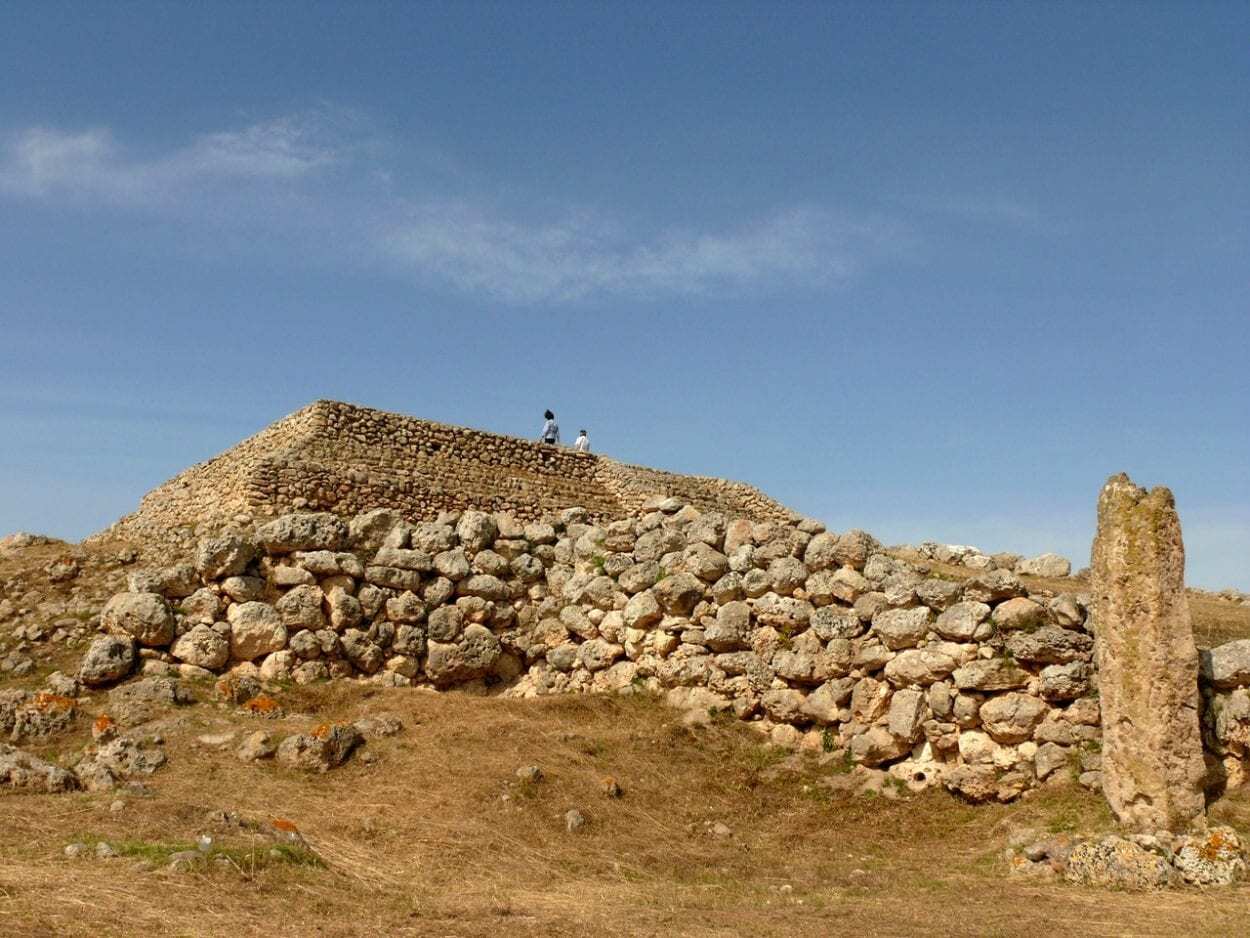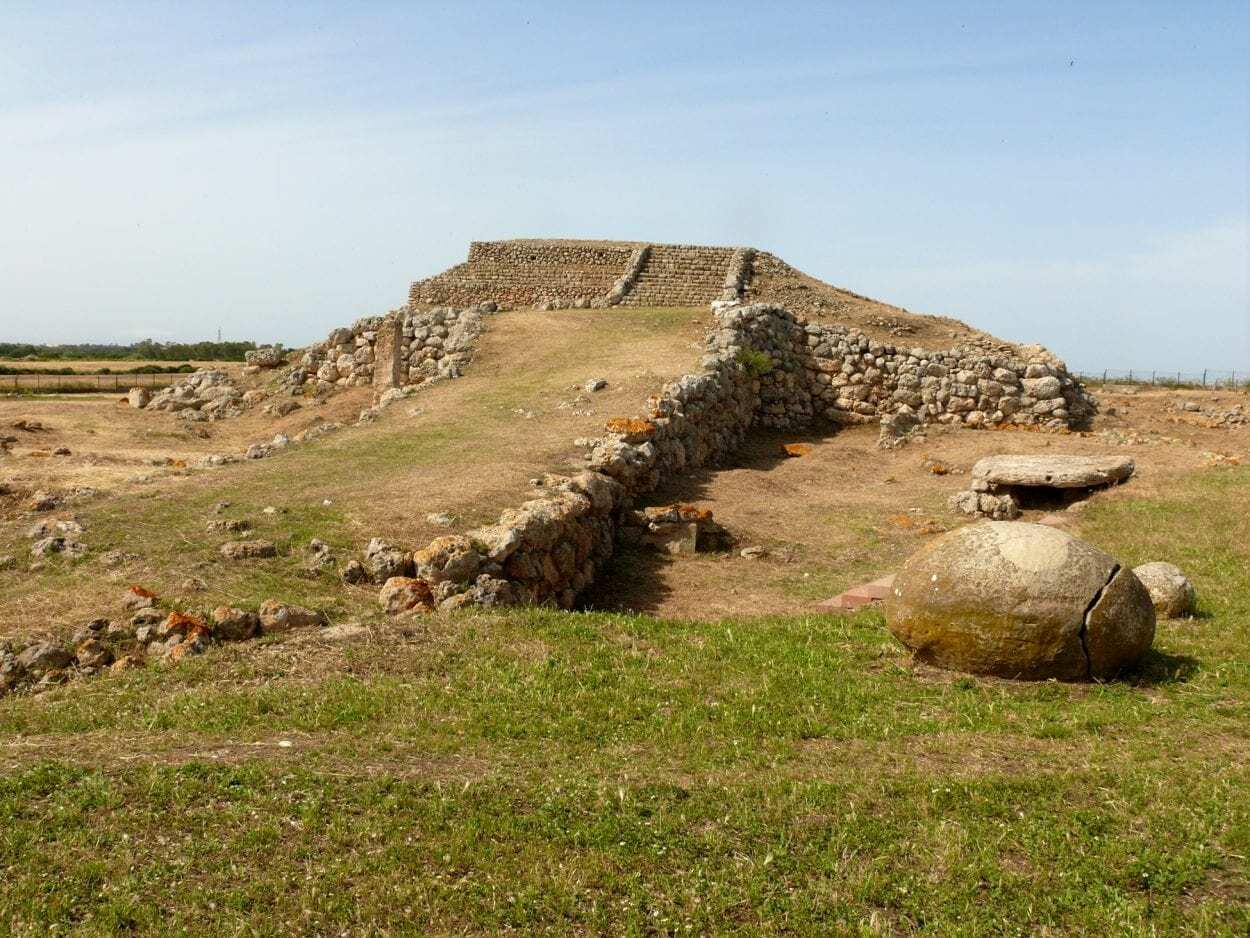Monte d’Accoddi is an ancient prehistoric complex, located on a hill in the Flumenargia territory, in the Sassari area of Sardinia.
Studies of the monument have described Monte d’Accoddi as a prehistoric altar, a viewing platform, a step pyramid, or even an ancient architectural ziggurat.
The site consists of two primary phases, with the earliest period of construction dating from around 4,000–3,650 BC and is generally associated with the Ozieri (also known as the “culture of St. Michael”) which was a prehistoric pre-Nuragic Hunter-gatherer culture later mixed with husbandry and agriculture.
This phase culminated in a raised platform to a height of around 5.5 metres which was accessible by a ramp. The monument was abandoned and possibly destroyed around 3000 BC, with a hiatus of around 200 years before the second phase of construction associated with the Abealzu-Filigosa culture (a Copper Age culture of Sardinia focused on pastoralism and agriculture).
This involved the earlier structure being enlarged with a covering of earth and stone, and a second tiered platform that gave the shape of a truncated step pyramid up to 10 metres in height. The summit was accessible by a larger ramp, measuring 42 metres in length constructed over the previous ramp.

A few metres from the ramp is a trapezoidal slab made of limestone that was either an offering table or a dolmen, with archaeological evidence from the Abealzu-Filigosa layers suggesting the function of sacrificial rituals for sheep, cattle, and swine. Several other altars have been identified within the boundaries of the site, in addition to carved spherical shaped boulders that functioned as sacred stones.
There is some evidence that Monte d’Accoddi continued to be occupied during the Beaker culture period (although evidence is sparse), with the monument being abandoned before the Nuragic Age of Sardinia from 1800 BC.
Excavations at Monte d’Accoddi was spread over two research projects, the first being directed by Ercole Contu in the 1950’s which studied the external architectural characteristics of the monument and a surrounding settlement. The second, directed by Santo Tiné revealed the existence of the earlier monument that led to the proposal to reconstruct Monte d’Accoddi during the 1980’s.
Header Image Credit : Larry Koester – CC BY 2.0





